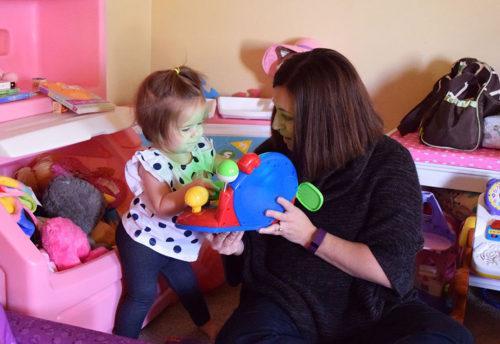
Tips for Family Trips
Before you pack up and head out on those that last vacation before the end of summer, check out our tips for making a smooth family trip!
Children with Autism Spectrum Disorder (ASD) often rely on and thrive in a structured environment, so when vacations arise, changes in routines can wreak havoc on a child’s emotional state.
Parents are often torn – “Do we give our child experiences visiting family and going to the beach? Or do we stick close to home for fear of the upset it may cause?” Vacation schedules for a parent of a child with ASD are far from relaxing but there are many ways to minimize the impact.
Practice Vacation Scenarios in Advance
Let your child know what they might expect to do or see on vacation. Role-playing what might take place during the trip can be very helpful. Creating a story of what will occur is an enlightening and effective tool in getting your child ready for the trip. Before you hit the road, have your child draw pictures of the things they are going to do on vacation. Draw a scene of going to the park with grandma or building a sand castle at the beach. This is a great way for them to mentally prepare for the upcoming experience. Conversely, once you return home, drawing pictures of the activities you experienced together will help them capture the memories and recall them later.
Make Arrangements Ahead of Time
Preparation is key. Calling ahead to make special arrangements will make your trip easier. Contact airlines, hotels, restaurants, and amusement parks and explain that you are traveling with a child who has autism; discuss your needs and request certain accommodations.
Keep a Calendar
Create a visually appealing schedule for the trip that similarly follows a school schedule with breaks for lunch, snacks, reading and more. Also, clearly lay out activities that are planned during your trip such as a day at the zoo and more. A schedule gives a child a cue of how to move throughout the day even if it’s in a home or city that is not familiar to them. Be sure not to over plan, and include breaks in the day. Know your child’s trigger points and plan accordingly. For instance, avoid all day excursions to a theme park if your child can only handle a few hours.
Have a Plan B
Help your child learn to make contingency plans if current plans must be adjusted or cancelled. For example, if bad weather cancels an outing, by having a contingency plan in place and communicate that plan in advance, it teaches the child that plans can change and helps him/her cope with the shift.
House Rules Stand
It is important to maintain normal house rules and tendencies throughout the trip, whether that’s limiting screen time, keeping the same bed time, or maintaining organization.
Familiarization is Key
Bring your child’s favorite toys from home, play the same games they are used to playing, bring their pillow and blanket with you and be sure to have a quiet and calm environment waiting. When visiting family, have the groceries bought in advance so their snacks are waiting for them. It’s also a good idea to have distractions on hand, with their favorite video or song ready for when they arrive.




Leave a Reply